Does Sour Cream Need To Be Room Temperature For Cake Recipe
Room Temperature Ingredients Equal Recipe Success
Taking the time to bring ingredients to room temperature (near 70ºF) can feel abrasive and oft times even I forget. You might exist tempted to just skip this step just trust me, recipe success depends on room temperature ingredients. These are my tips for quickly bringing ingredients to room temperature quickly.
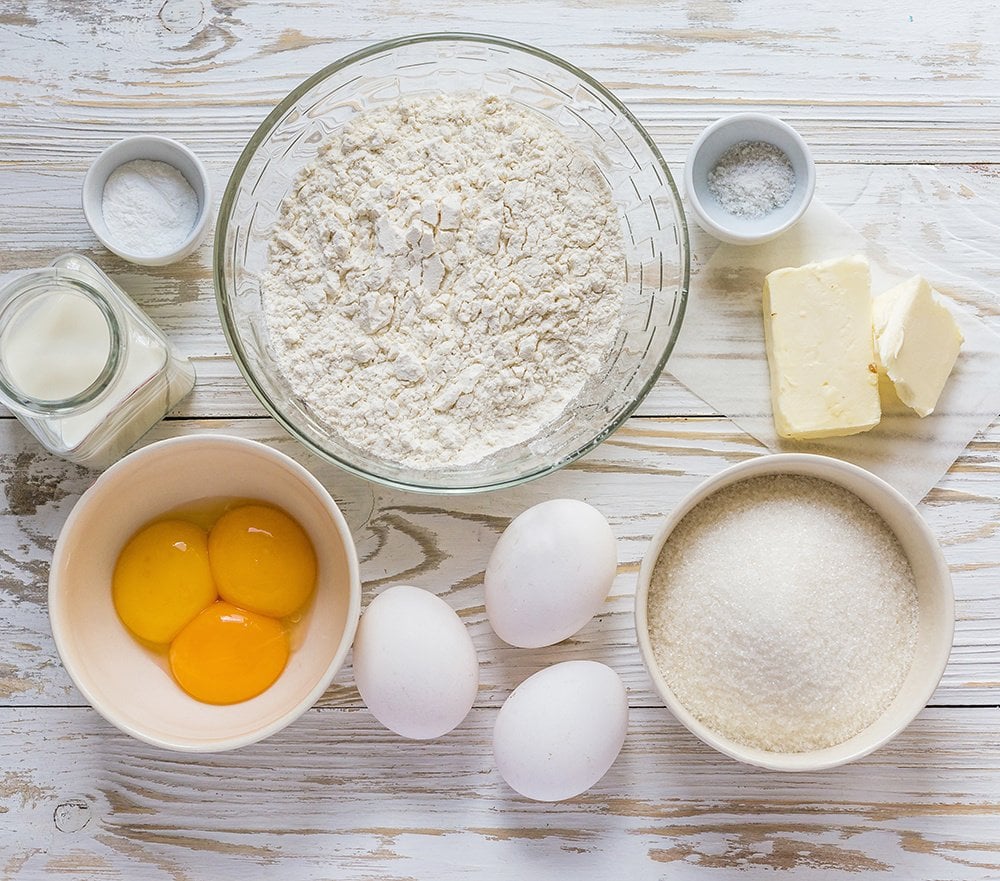
Do I actually demand room temperature ingredients?
If you've made any of my recipes (or about recipes in general) you may accept read that you demand room temperature ingredients. Normally, things like eggs, butter, and milk but tin can also include ingredients similar sour cream, egg whites or mayonnaise.
The reason backside all this warming of ingredients? Creating an Emulsion. When you combine two or more than ingredients that don't normally mix together (like oil and water) and getting them to stay mixed, y'all've created an emulsion.
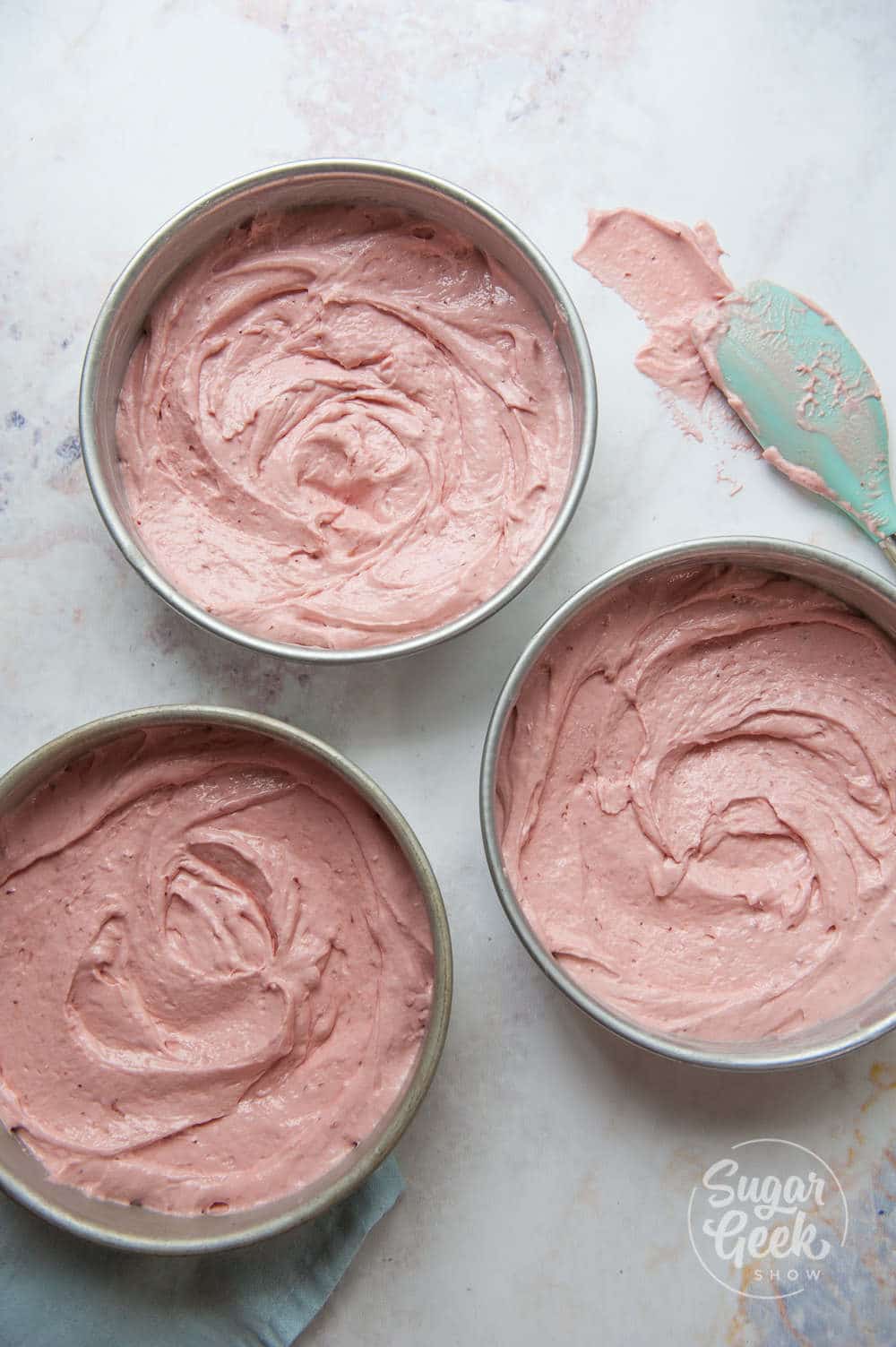
Mayonnaise is a bang-up example of a unproblematic emulsion. If you lot just mixed egg yolks and oil together with a fork, the oil would separate from the eggs. Simply if the oil is added slowly while continuously whisking, the oil and egg yolk becomes a new mixture and it volition not split. This is the emulsion.
What happens when you don't have room temperature ingredients?
When ingredients are dissimilar temperatures, they do not like to mix. Bringing ingredients to the same temperature helps them to combine together. The reason recipes often say "room temperature" is because most ingredients in a recipe are room temperature already unless they have been refrigerated.
If you lot don't bring ingredients to room temperature, you end up with cold chunks of butter in your frosting, uneven baking, flat cakes, and curdled buttercream.
If you've ever tried to combine cold fruit reduction or curd with buttercream yous may notice the two practice not mix well and it appears curdled.
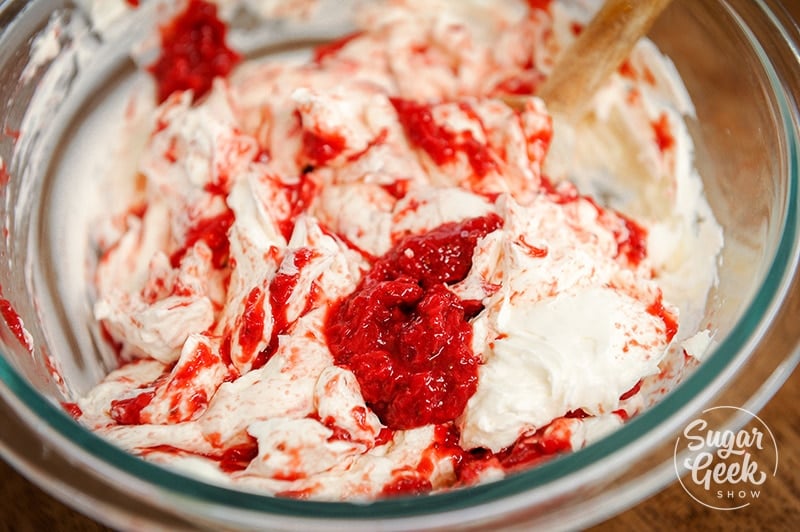
But if yous warm the fruit up a little and so mix information technology with the buttercream, all of a sudden it all comes together.
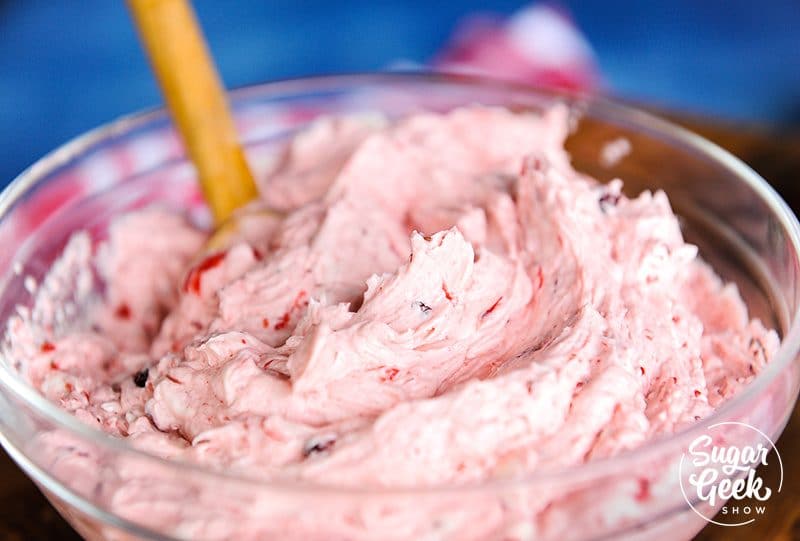
When all the ingredients in your recipe are the same temperature they come up out better. Cake batters are smoother and ingredients and air are distributed evenly. Cakes and cupcakes rise ameliorate and have a better texture.
Sometimes in my Cake Newbs baking group, someone will mail service a photo of a block with an oily, wet layer at the bottom and ask what went wrong. 99% of the time the reason is that one of their ingredients were not room temperature. Commonly the eggs. This causes the concoction to curdle and split during baking. The oil settles at the bottom, the cake has a coarse texture and doesn't rise very well.
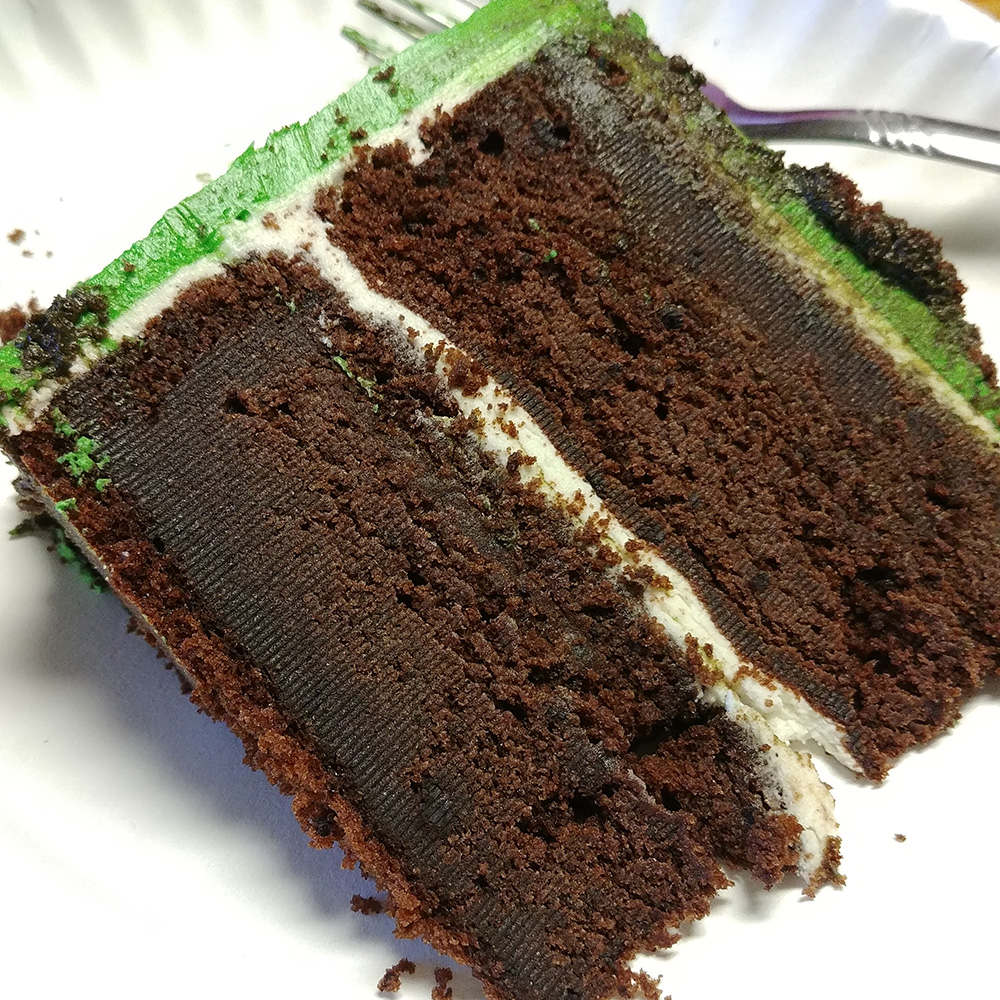
How do you bring ingredients to room temperature?
Normally, you would bring annihilation cold to room temperature a few hours before you need to use them. Depending on how hot or cold your room is, this could take quite a while. I don't know about you lot but I very rarely think about bringing ingredients to room temperature until it'southward as well late.
Don't worry, you can all the same warm upward your ingredients really quickly using some unproblematic methods.
How to bring butter to room temperature
Butter is a very common (and succulent) ingredient in most baked appurtenances. Depending on what y'all're making, it'southward usually at room temperature. The reason? Well, information technology's really hard to get butter to combine with anything when it's common cold and hard equally a rock.
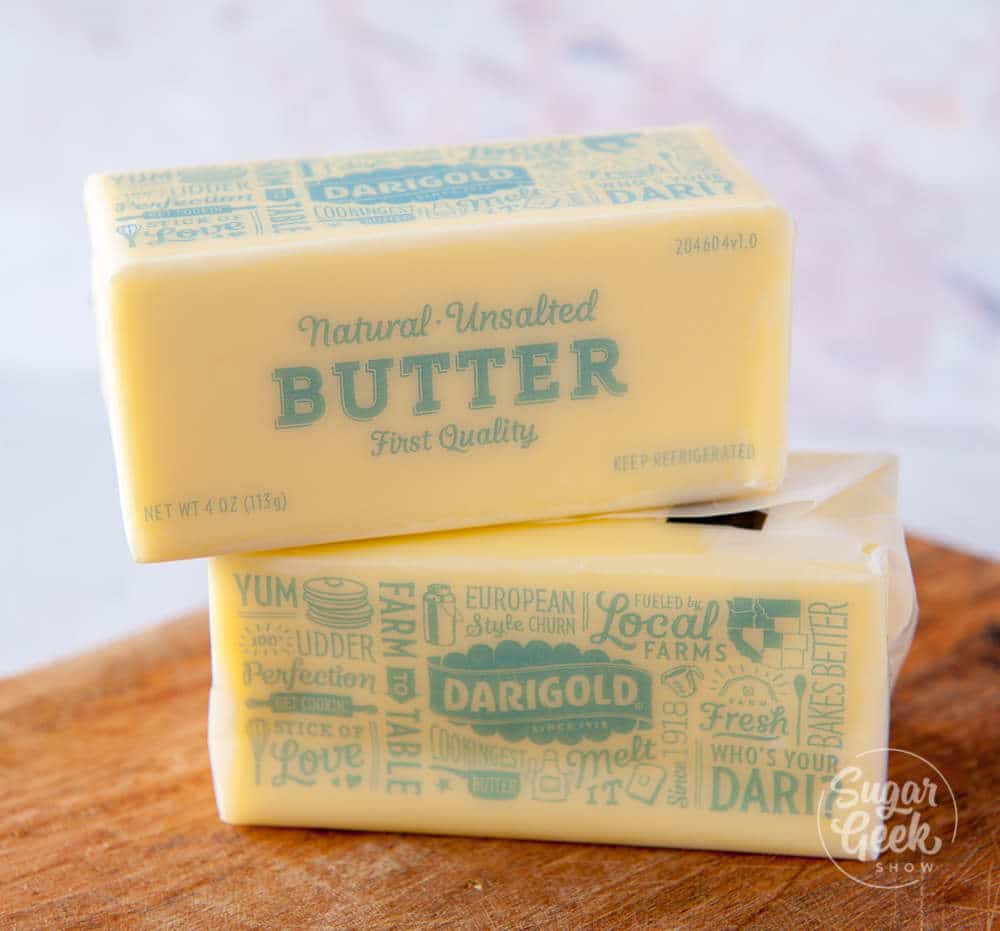
Butter is ane of the most common oil-based ingredients that we employ in recipes to create all kinds of emulsions. Here are some of the most common.
- Creaming butter with sugar to trap air and develop a block structure
- Creaming butter with cream cheese and powdered sugar to create foam cheese frosting
- Whipping butter with egg whites and powdered sugar to make piece of cake buttercream
If you're thinking ahead, you can accept your butter out of the fridge and leave it on the countertop overnight to allow it to come up to room temperature.
You tin also cut your cold butter upward into cubes and leave it at room temperature and information technology will soften in about 30 minutes on its own. In a hurry? Fill up a drinking glass basin with hot h2o for v minutes, then drain the water and dry out the bowl. Place the bowl over the butter and it will be room temperature in a few minutes.
Short on time and lazy? (That'southward me). I put my butter in the microwave while it'due south still wrapped in paper. I buy my butter in the big 1 pound blocks so I start with 30 seconds so rotate the butter and reduce my power to l% and go on heating in 10 2d increments until it's softened.
For smaller cubes of butter, you'd use less time. Butter is properly softened when you can print your finger into the surface and it leaves an indent merely the overall cube holds its shape.
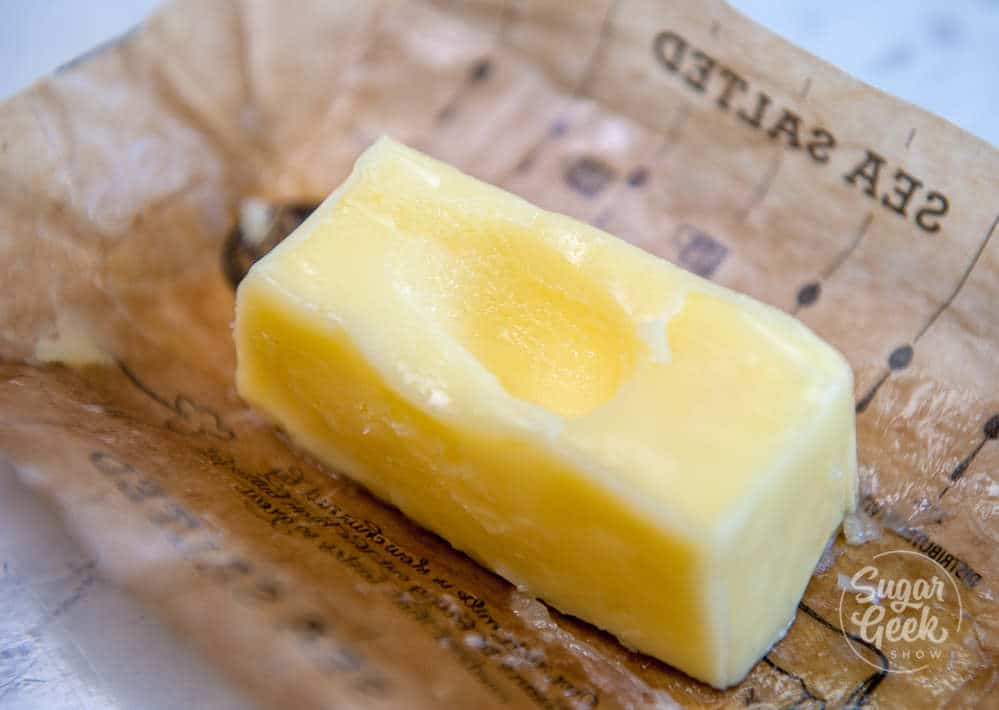
The risk with microwaving is that you can easily over-rut it and melt your butter. Melted butter has the same problems as cold butter and does not combine well with other ingredients so be conscientious.
How to bring cream cheese to room temperature
Take y'all ever read a recipe that said to use room temperature foam cheese and you lot thought nah… I don't really need to. So yous just put the cold foam cheese in the bowl with the butter and thought if you just mixed information technology long enough it would all work out only to discover lumps of cream cheese that would NEVER mix in?
Yea.. me either *cough*
So yea if yous want to bring your cream cheese to room temperature just cut it into cubes and put it on a warm plate or on the oven while it's preheating. It just takes most 15 minutes to warm up.

How to bring eggs to room temperature
Cold eggs can ruin a buttercream or cake batter really apace. When you add common cold eggs into softened butter, they can crusade the butter to harden in chunks and ruin your emulsion. Cold eggs also do non whip upwards very well so if you're trying to brand a meringue or trap a lot of air, bring your eggs to room temperature offset.
For eggs in the shell, I place them into a basin of warm h2o for 5-10 minutes. Usually for as long as it takes me to scale out my other ingredients for the recipe.
For egg whites, I measure out them out in a measuring cup and then place the measuring cup into a bowl of warm h2o.
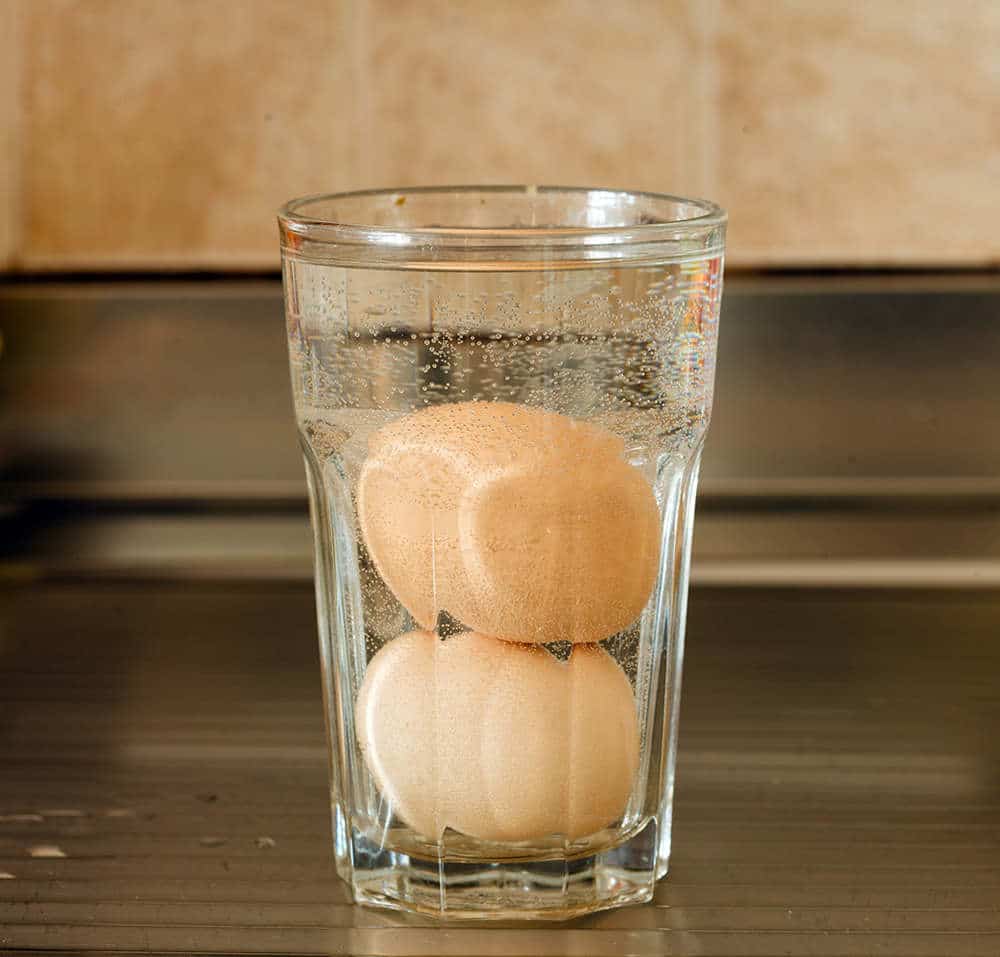
How to bring milk to room temperature
This one is super elementary. I only microwave it later I measure information technology out in my glass measuring cup. Usually, 30 seconds is enough for well-nigh 8 ounces of milk. If you accept a super-powerful microwave get for less time or reduce the ability.
Other ingredients like sour cream, mayonnaise, and fruit curd
Ordinarily, you lot don't need a lot of these ingredients in recipes so you can get away with taking them out about an 60 minutes before you need them and they will warm up pretty chop-chop.
If you're short on time, measure out what you need and place into a warmed bowl (warm with hot water for 5 minutes then dry out).

What about hot ingredients like ganache, freshly made curd, and custard?
Sometimes room temperature means cooling the ingredients instead of warming. For instance, in my chocolate block recipe, you have to add boiling water to cocoa powder and so let it cool. This can take an annoyingly long time to cool. Aforementioned affair with chocolate ganache if you lot want to employ it every bit a frosting.
The best way to cool down hot mixtures it to pour them into a large, cold pan. I like to use big block pans. This spreads the mixture out so it has more surface area exposed to the air and allows the rut to disperse rapidly.
You lot can also put the mixture in the refrigerator to speed things up merely be conscientious or you might accept the opposite problem on your hands.
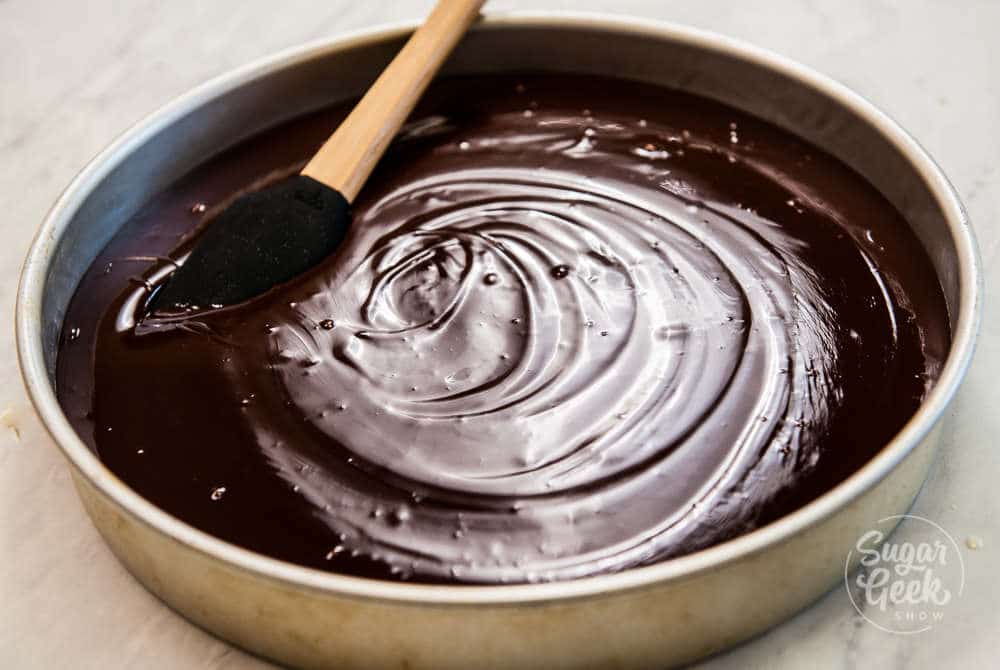
Source: https://sugargeekshow.com/news/room-temperature-ingredients/#:~:text=Do%20I%20really%20need%20room,cream%2C%20egg%20whites%20or%20mayonnaise.
Posted by: mondragonficut1962.blogspot.com

0 Response to "Does Sour Cream Need To Be Room Temperature For Cake Recipe"
Post a Comment